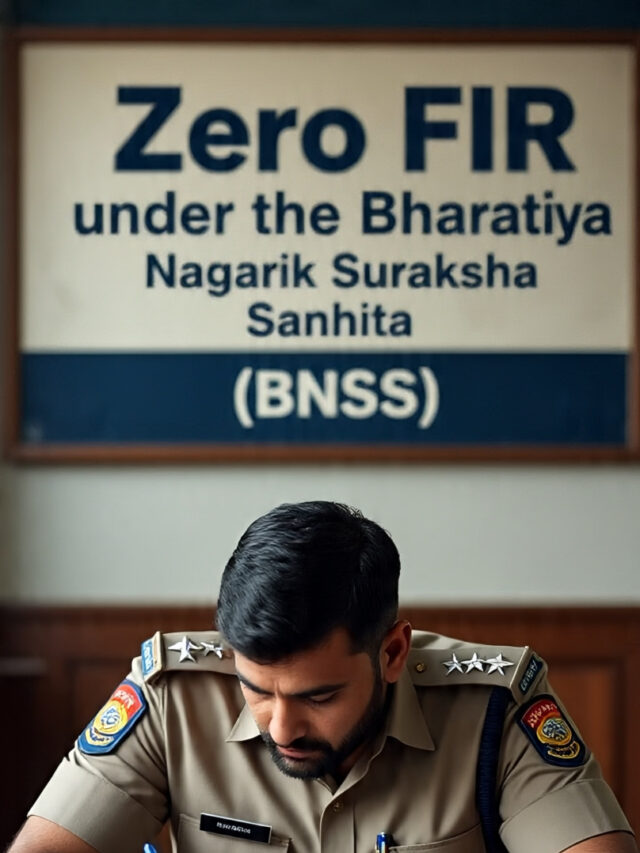Introduction of the Dowry-related violence in India: – Marriages are considered to be formed in heaven, but in our century, I greatly doubt it; instead, I believe it is made by the demon himself. The last thing a bride wants after leaving behind her father’s home & mother’s love is for her in-laws to turn into demons. Dowry lust leads to dowry death and abuse on the part of the husband and in-laws. Dowry deaths, murder-suicide, and bride burning are all symptoms of a strange societal ailment, and they are an undesirable aspect of our social structure.
This is a uniquely Indian phenomenon, the black plague brought on by the dowry new system. Since the dowry system is practised by practically every group in society, regardless of religion, based on caste, or faith, India has seen the black ills of the dowry system in a more intense form in almost all sections of the country over the last few decades. Not only are wedded women mentally tortured, disrespected, physically attacked, forced to commit suicide, abandoned their husbands, tormented, and ill-treated on a regular basis, but numerous are even burnt alive only because their parents and family are unable to meet the constant dowry expectations of in-laws or husband.
Background
In India’s ancient history, there is no explicit record of dowry. According to ancient eyewitnesses, dowry was insignificant in Ancient Times, and daughters even had inheritance rights. Evidence indicates that bride prices occurred later in the twentieth century, leaving impoverished men as bachelors. The Manu Code allowed for dowry and bride financial wealth, but it was mostly related to the upper castes, such as Brahmins (Priestly).
Furthermore, as a significant part of the conjugal estate, marriage required the reciprocation of gifts. Ancient literature, such as the Vedas, demonstrates that such behaviours did not exist throughout the Ancient era. In the Indus Valley civilization, it appears that a woman possessed property rights in her father’s estate. Even Hindu legal sources such as the Smritis testify that dowry was not prevalent or relatively infrequent enough to be recognized.
Dowry in India has its origins in the mediaeval period when a bride was given a present in cash or in other forms such as property, jewellery, animals, and so on, in order to sustain her independence after the wedding. During the Colonial era, British rulers made dowry a legal requirement, and it became formally legal to marry.
Despite the fact that the Dowry Prohibition Act of 1961 made it illegal to seek dowry, India still sees signs of bride-price negotiation Dowry.
Facts and Figures
India has by far the biggest number of dowry-related deaths, as well as deaths caused by husbands or in-laws. As per the NCRB, a total of 8,233 deaths due to dowry greed were documented in 2012, showing that a bride was burned almost every 90 min.
In 1996, Indian police estimated that they get around 2,500 incidents of bride-burning each year. The death rate has risen steadily over time. Every day in 2019-20, a total of 20 brides will perish, for what reason? Dowry is the answer to this question.
Dowry Deaths and a complete Lockdown
A new criminal pattern emerged in the year 2020. During lockdown days, there was a spike in crimes & abuse against women. The offenders were enslaved by the prey as a result of the lockdown. As a result, crime has increased while the proportion of crimes filed has decreased.
Rising of Dowry Death Cases
Dowry was supposed to be a present to the woman and her in-laws, but who knew that a simple present would become a pawn for expectations, or should I say invalid hopes and expectations? Greed, not money, is said to be the root of all problems. This is precisely how dowry death became known as the most heinous of offences. The desire for a present morphed into a dowry rather than a simple gift. The expectation of acquiring costly cars, cash in hand, and jewellery is the reason for its rise. When a parent cannot fulfil such expectations, he frequently fails to meet them. The poor father’s failure cost him a life, his beloved daughter’s life.
Dowry in the Indian Penal Code [IPC]
Definition and Scope
The word Dowry has no definition in the IPC. Furthermore, sec. 304B indicates that dowry has a similar definition as stated in section 2(1) of the Dowry Prohibition Act of 1961, which stipulates that “dowry” refers to any asset or valued security given or promised to be given, explicitly or implicitly:
- by one partner to a marriage ceremony to the other partner to the marriage; or
- By either party’s or any other person’s parent, to either party’s or any other person’s parent,
- In relation to the marriage of the aforementioned parties, at or before any point just after marriage, it doesn’t contain a dower or Mehar in the instance of individuals who are subject to Muslim Law (Shariat). As per the Supreme Court, dowry does not include customary cash & presents.
Dowry-related offences
Dowry-related offences are mentioned in the Penal Code
Dowry Death: On Nov. 19, 1986, the Dowry Prohibition Act (Amendment Act, 1986 introduced Sec 304B to the IPC, establishing a new crime known as Dowry Death.
Sec 304B of the IPC is more stringent than Sec 498A of the IPC.
- The offence is cognizable,
- non-bailable,
- and triable to a session court’s judgment.
Section 304B
When a woman dies from burns or bodily injury within 7 yr of her marriage, and it is conclusively demonstrated that she was harassed or intimidated by her partner or any relative of her partner for, or in relation with, any dowry demand, such death is termed to as dowry death, & such husband or close relative is probably considered to have actually caused her death.
Anyone guilty of dowry death faces a minimum of 7 years imprisonment & a maximum of life imprisonment.
Both sec. 302 & 304B of the IPC will be used to investigate and prosecute dowry death cases.
Rajbir v. Haryana State
The apex court, after taking notice of a rise in dowry death cases in the country, directed all Registrar Generals/Registrars of High Courts to issue directions to all trials to generally add sec 302, IPC to the charge of sec 304B, IPC, so that death sentences could have been imposed in such heinous and cruel and inhumane offences against women.
Dowry death cases are currently registered u/s.304B of the IPC, which carries a maximum penalty of life in prison (min. 7 years). Following this order, anyone guilty of dowry death will be prosecuted under sections 302 & 304B of the IPC and will face either life in jail or death sentence. This is a positive measure that will help to reduce the number of dowry deaths in the country.
Sec. 302 (punishment for the crime of Murder): Anyone who commits murder will be punished by death or [life imprisonment], as well as a fine.
Essential of dowry death
The following are the basics of dowry death, as determined by a careful examination of section 304B, IPC:
- A woman’s death should be caused by severe burns, physical harm, or something other than usual situations;
- The woman must have been physically abused or sexually harrassment by her husband or any of his relatives within 7 years of her marriage; the woman must have died within 7 years of her marriage; the woman must’ve been subjected to abuse or sexual harassment by her husband or any of his relatives;
- In response to or in relation to dowry demands, assault or harassment must be done.
- Prior to her death, the female should’ve been subjected to abuse or harassment.
Section 498A of IPC
Whoever, being the husband or relative of the husband, subjects such woman to cruelty punishable with imprisonment for a term that may extend to 3 years, as well as a fine.
Historical judgement
Although it’s been challenging to get the entire thing and the rules related to dowry death to be effectively applied, there have been some causes that have resulted in breakthroughs in the face of existing flaws. The Apex Court declared in
Satbir Singh vs. The State of Haryana (2021)
If the prosecution can demonstrate the elements of Sec 304-B of the IPC, the burden of proving innocence is entirely on the defence. Furthermore, the provisions of Section 304B of the IPC are significantly more rigorous than those of Sec 498A of the IPC in that they are cognizable, non-bailable, and subject to judicial review.
The court’s ratio decidendi in
Mustafa Shahadal Shaikh v. the State of Maharashtra (2012)
Said that the language applied under Section 304-B, “soon before death,” doesn’t really ascribe any precise time frame under both the IPC and Sec. 113-B of the Evidence Act. As a result, courts may define the word “soon before death” based on the facts and circumstances of the case. However, it would indicate that the time between the cruelty or harassment and the death in question should be short. It would have been sufficient if the purported act of cruelty had occurred in the distant past and had gone stale enough not to affect the woman’s mental stability.
Existing legal loopholes that lead to misunderstanding
Yet, beyond the facts of effective government implementation and functioning, as well as an absence of appropriate coordination, there is another specific difficulty in which these laws are frequently employed in the wrong way. These laws have been utilised to libel or slander people’s names in several cases. There is also judicial failure since there are cases when the cause of the death is not dowry but something else, such as in the case of Balbir Singh v/s state of Punjab (1956), where the cause of death could be anything from mental disease to something else. As a result, we must also consider the drawbacks in order to implement it successfully.
Conclusion
In today’s society, dowry is both a source of enjoyment and a primary source of the curse. It also brings satisfaction to the husband and his relatives, who receive cash, expensive clothing and kitchenware, antique furniture, and bedding materials, among other things.
However, it is a curse for the bride’s parents, who must incur significant expenses in order to meet the bridegroom’s party’s outrageous demands. Even after marriage, dowry expectations do not go away. In some cases, the bride’s in-laws are willing to subject the bride to bullying harassment, humiliation, and mental and physical torment.
When the bride’s parents are put under more pressure, their precious daughter frequently has no choice but to commit suicide in order to avoid more humiliation and abuse at the hands of her husband’s family. Furthermore, when brides are burned alive, the evidence is frequently destroyed in the flames.

























